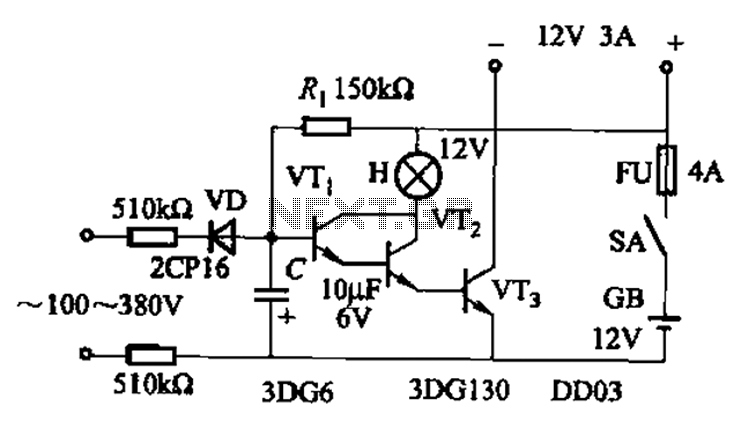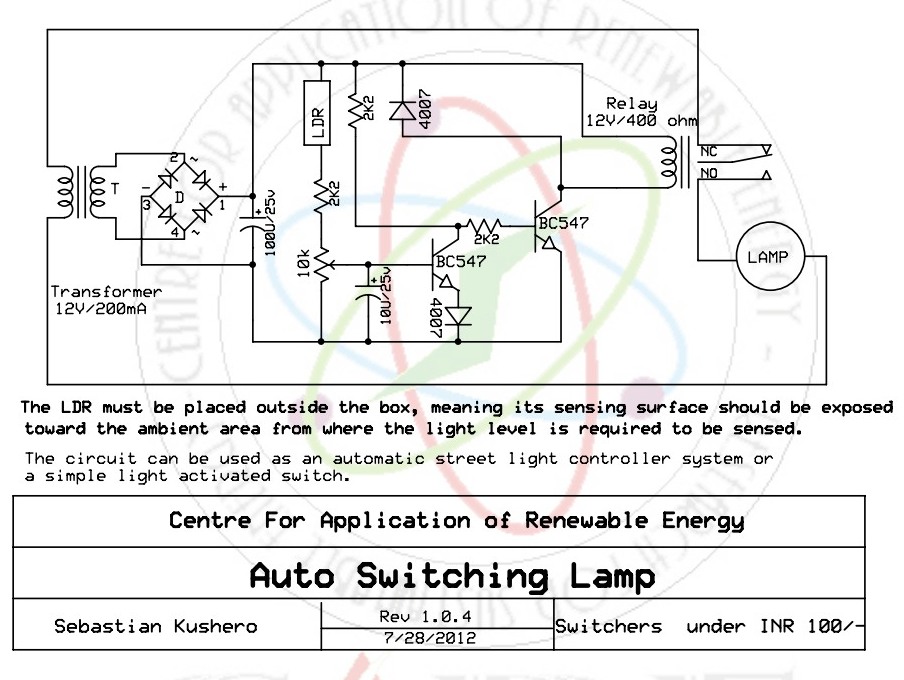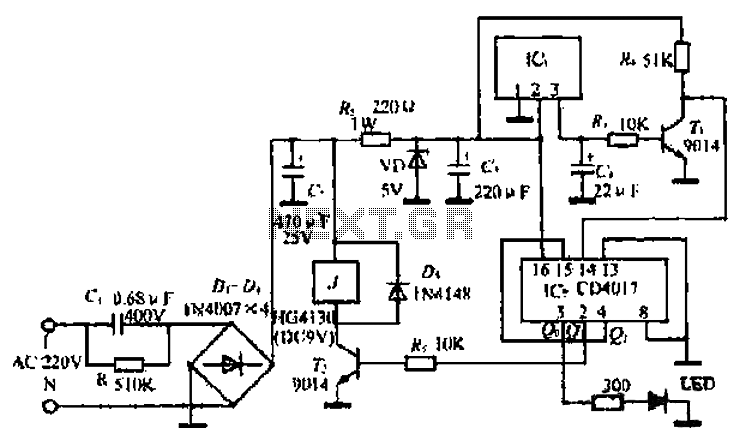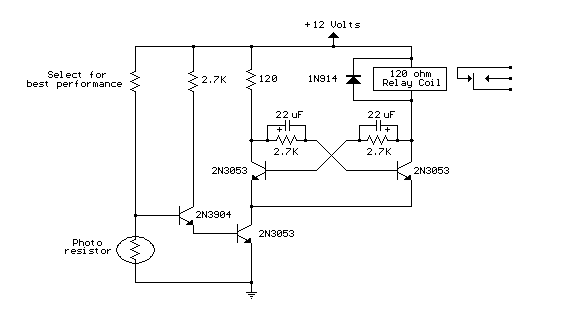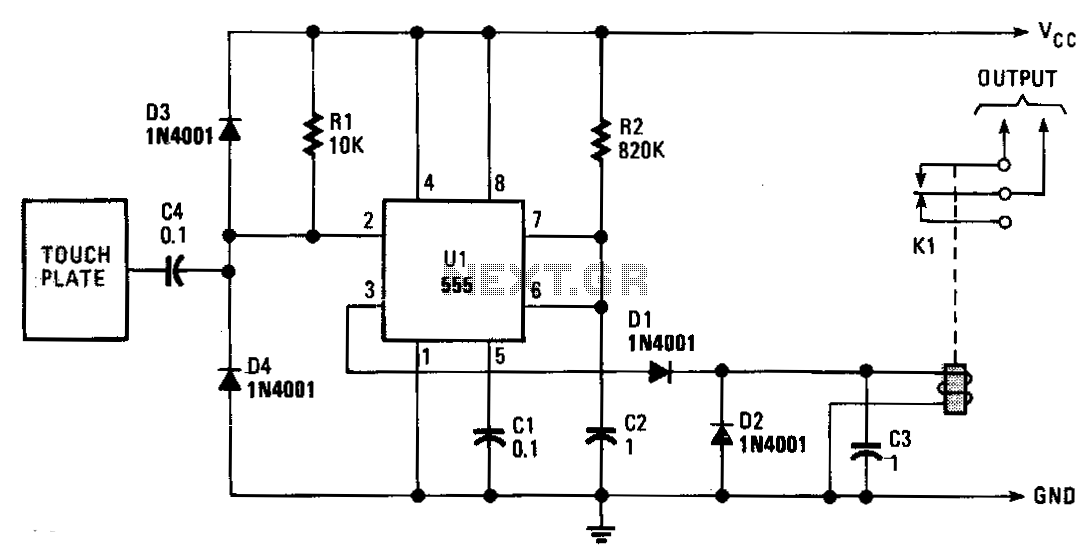
Touch Switch with MPF102 JFET
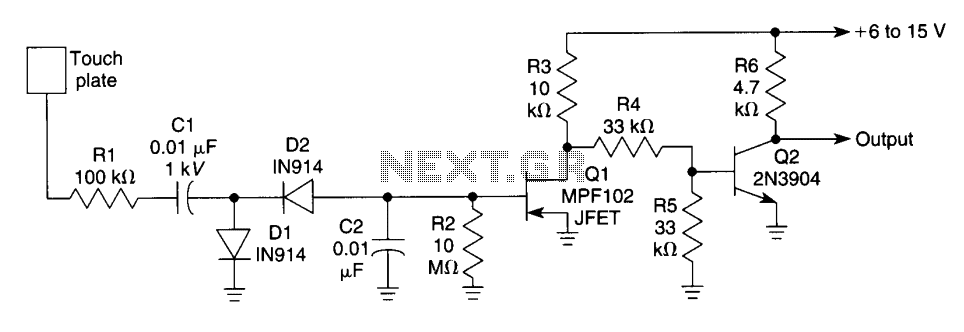
When the touch plate is activated by a large object, such as a human body, stray 60 Hz pickup is rectified by diodes D1 and D2, resulting in a negative voltage across resistor R2 and capacitor C2, which affects the gate of transistor Q1. This causes Q1 to turn off, leading to the conduction of Q2 and a low output state. Additionally, Q2 remains off as Q1 is typically in a conducting state.
The circuit operates as a touch-sensitive switch, utilizing the principles of capacitive sensing. When a substantial conductive object approaches the touch plate, it introduces a change in capacitance that induces a voltage signal due to the stray 60 Hz electromagnetic interference commonly present in the environment. Diodes D1 and D2 serve to rectify this alternating current (AC) signal, converting it into a direct current (DC) signal.
The rectified voltage is applied across the resistor R2 and capacitor C2, creating a negative voltage potential at the gate of transistor Q1. This negative voltage effectively switches off Q1, which is normally in a conducting state, allowing the current path to change. As Q1 turns off, it triggers Q2 to conduct, resulting in a low output state from the circuit.
The configuration ensures that Q2 remains in a cut-off state under normal conditions, as Q1 is usually conducting. This design provides stability and prevents false triggering from minor disturbances. The choice of components, such as the values of R2 and C2, is crucial as they determine the sensitivity and response time of the touch-sensitive switch. The circuit can be utilized in various applications, including touch-sensitive controls in consumer electronics, security systems, and automation devices. Proper layout and shielding may be necessary to minimize interference and ensure reliable operation in different environments.When the touch plate is contacted by a large object (human body, etc.), stray 60-?? pickup is rectified by D1 and D2, and produces a negative voltage across R2-C2 and the gate of Q 1. Q1 cuts off, causes Q2 to conduct, and the output goes low. Q2 is held cut off since Q1 normally is conducting.
The circuit operates as a touch-sensitive switch, utilizing the principles of capacitive sensing. When a substantial conductive object approaches the touch plate, it introduces a change in capacitance that induces a voltage signal due to the stray 60 Hz electromagnetic interference commonly present in the environment. Diodes D1 and D2 serve to rectify this alternating current (AC) signal, converting it into a direct current (DC) signal.
The rectified voltage is applied across the resistor R2 and capacitor C2, creating a negative voltage potential at the gate of transistor Q1. This negative voltage effectively switches off Q1, which is normally in a conducting state, allowing the current path to change. As Q1 turns off, it triggers Q2 to conduct, resulting in a low output state from the circuit.
The configuration ensures that Q2 remains in a cut-off state under normal conditions, as Q1 is usually conducting. This design provides stability and prevents false triggering from minor disturbances. The choice of components, such as the values of R2 and C2, is crucial as they determine the sensitivity and response time of the touch-sensitive switch. The circuit can be utilized in various applications, including touch-sensitive controls in consumer electronics, security systems, and automation devices. Proper layout and shielding may be necessary to minimize interference and ensure reliable operation in different environments.When the touch plate is contacted by a large object (human body, etc.), stray 60-?? pickup is rectified by D1 and D2, and produces a negative voltage across R2-C2 and the gate of Q 1. Q1 cuts off, causes Q2 to conduct, and the output goes low. Q2 is held cut off since Q1 normally is conducting.
